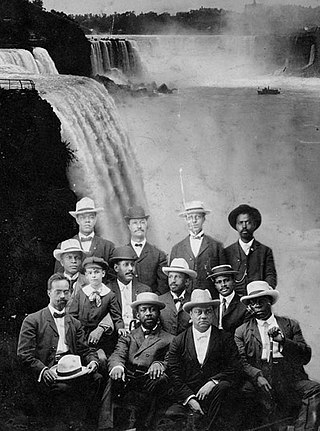
The Niagara Movement (NM) was a black civil rights organization founded in 1905 by a group of activists—many of whom were among the vanguard of African-American lawyers in the United States—led by W. E. B. Du Bois and William Monroe Trotter. It was named for the "mighty current" of change the group wanted to effect and took Niagara Falls as its symbol. The group did not meet in Niagara Falls, New York, but planned its first conference for nearby Buffalo.

Walter Francis White was an American civil rights activist who led the National Association for the Advancement of Colored People (NAACP) for a quarter of a century, 1929–1955, after joining the organization as an investigator in 1918. He directed a broad program of legal challenges to racial segregation and disfranchisement. He was also a journalist, novelist, and essayist. He graduated in 1916 from Atlanta University.

Josephine St. Pierre Ruffin was an African-American publisher, journalist, civil rights leader, suffragist, and editor of the Woman's Era, the first national newspaper published by and for African-American women.
The Communist Party USA, ideologically committed to foster a socialist revolution in the United States, played a significant role in defending the civil rights of African Americans during its most influential years of the 1930s and 1940s. In that period, the African-American population was still concentrated in the South, where it was largely disenfranchised, excluded from the political system, and oppressed under Jim Crow laws.
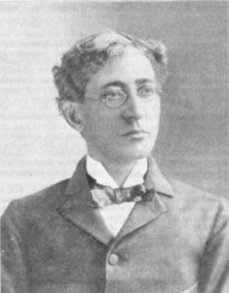
Timothy Thomas Fortune was an orator, civil rights leader, journalist, writer, editor and publisher. He was the highly influential editor of the nation's leading black newspaper The New York Age and was the leading economist in the black community. He was a long-time adviser to Booker T. Washington and was the editor of Washington's first autobiography, The Story of My Life and Work. Fortune's philosophy of militant agitation on behalf of the rights of black people laid one of the foundations of the Civil Rights Movement.

Bruce Scott Gordon is an American business executive who spent most of his career with Verizon and currently serves as a corporate director of CBS, Northrop Grumman, and Tyco International. He was selected in June 2005 to head the NAACP, a major American civil rights organization. Gordon served in that position until March 2007.

Mary Burnett Talbert was an American orator, activist, suffragist and reformer. In 2005, Talbert was inducted into the National Women's Hall of Fame.
The Leadership Conference on Civil and Human Rights, formerly called the Leadership Conference on Civil Rights, is an umbrella group of American civil rights interest groups.

The National Afro-American Council was the first nationwide civil rights organization in the United States, created in 1898 in Rochester, New York. Before its dissolution a decade later, the Council provided both the first national arena for discussion of critical issues for African Americans and a training ground for some of the nation's most famous civil rights leaders in the 1910s, 1920s, and beyond.

Bishop Alexander Walters was an American clergyman and noted civil rights leader. Born a slave in Bardstown, Kentucky, just before the Civil War, he rose to become a bishop in the African Methodist Episcopal Zion Church at the age of 33, then president of the National Afro-American Council, the nation's largest civil rights organization, at the age of 40, serving in that post for most of the next decade.
Walter Gilbert Alexander I was an American physician and Republican Party politician from New Jersey. He was president of the National Medical Association and the first African American to serve in the New Jersey Legislature.

The National Association for the Advancement of Colored People (NAACP) is a civil rights organization in the United States, formed in 1909 as an interracial endeavor to advance justice for African Americans by a group including W. E. B. Du Bois, Mary White Ovington, Moorfield Storey and Ida B. Wells. Leaders of the organization included Thurgood Marshall and Roy Wilkins.
Thomas Irving Atkins was an American attorney and politician who served as a member of the Boston City Council and General Counsel of the NAACP.
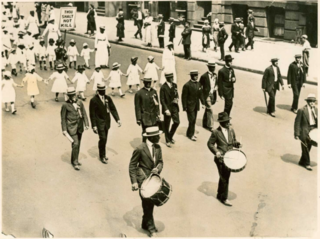
The anti-lynching movement was an organized political movement in the United States that aimed to eradicate the practice of lynching. Lynching was used as a tool to repress African Americans. The anti-lynching movement reached its height between the 1890s and 1930s. The first recorded lynching in the United States was in 1835 in St. Louis, when an accused killer of a deputy sheriff was captured while being taken to jail. The black man named Macintosh was chained to a tree and burned to death. The movement was composed mainly of African Americans who tried to persuade politicians to put an end to the practice, but after the failure of this strategy, they pushed for anti-lynching legislation. African-American women helped in the formation of the movement, and a large part of the movement was composed of women's organizations.

Ruby Hurley was an American civil rights activist. She was a leader in the Civil Rights Movement and administrator for the NAACP, and was known as the "queen of civil rights".
Council for United Civil Rights Leadership (CUCRL) was an umbrella group formed in June 1963 to organize and regulate the Civil Rights Movement. The Council brought leaders of Black civil rights organizations together with white donors in business and philanthropy. It successfully arranged the August 1963 March on Washington for Jobs and Freedom with the Kennedy administration.
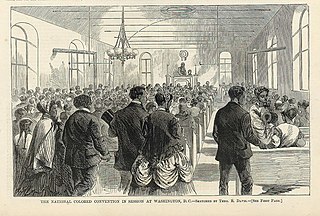
The Colored Conventions Movement, or Black Conventions Movement, was a series of national, regional, and state conventions held irregularly during the decades preceding and following the American Civil War. The delegates who attended these conventions consisted of both free and formerly enslaved African Americans including religious leaders, businessmen, politicians, writers, publishers, editors, and abolitionists. The conventions provided "an organizational structure through which black men could maintain a distinct black leadership and pursue black abolitionist goals." Colored Conventions occurred in thirty-one states across the US and in Ontario, Canada. The movement involved more than five thousand delegates and tens of thousands of attendees.

William Henry Steward was a civil rights activist from Louisville, Kentucky. In February 1876, he was appointed the first black letter carrier in Kentucky. He was the leading layman of the General Association of Negro Baptists in Kentucky and played a key role in the founding of Simmons College of Kentucky by the group in 1879. He continued to play an important role in the college during his life. He was also co-founder of the American Baptist, a journal associated with the group, and Steward went on to be the journal's editor. He was a leader in Louisville civic and public life, and played a role in extending educational opportunities in the city to black children. In 1897, his political associations led to his appointment as judge of registration and election for the Fifteenth Precinct of the Ninth Ward, overseeing voter registration for the election. This was the first appointment of an African American to such a position in Kentucky. He was elected president of the Afro-American Press Association in the 1890s He was a close associate of Booker T. Washington, and in the late 1890s and early 1900s, Steward was a prominent member of the National Afro-American Council, which was dominated by Washington. He was president of the council from 1904 to 1905. He was a lifelong opponent of segregation and was frequently involved in anti-Jim Crow law activities. In 1914 he helped found a Louisville branch of the National Association for the Advancement of Colored People (NAACP), which he left in 1920 to become a key player in the Commission on Interracial Cooperation (CIC). He was also a prominent freemason and twice elected Worshipful Master of the Grand Lodge of Kentucky.
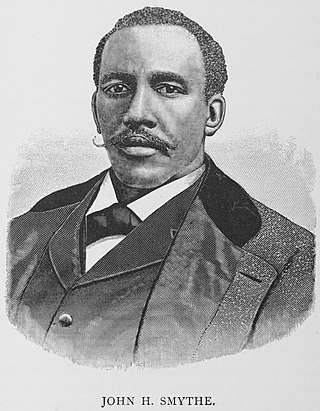
John H. Smythe was the United States ambassador to Liberia from 1878 to 1881 and from 1882 to 1885. Before his appointment, he had various clerkships in the federal government in Washington, DC, and in Wilmington, North Carolina. Later in his life he took part in a number of leading African American organizations and was president of a Reformatory School outside of Richmond, Virginia.

John Campbell Dancy was a politician, journalist, and educator in North Carolina and Washington, D.C. For many years he was the editor of African Methodist Episcopal (AME) Zion church newspapers Star of Zion and then Zion Quarterly. In 1897 he was appointed collector of customs at Wilmington, North Carolina, but was chased out of town in the Wilmington insurrection of 1898, in part for his activity in the National Afro-American Council which he helped found that year and of which he was an officer. He then moved to Washington, D.C., where he served as Recorder of Deeds from 1901 to 1910. His political appointments came in part as a result of the influence of his friend, Booker T. Washington.













